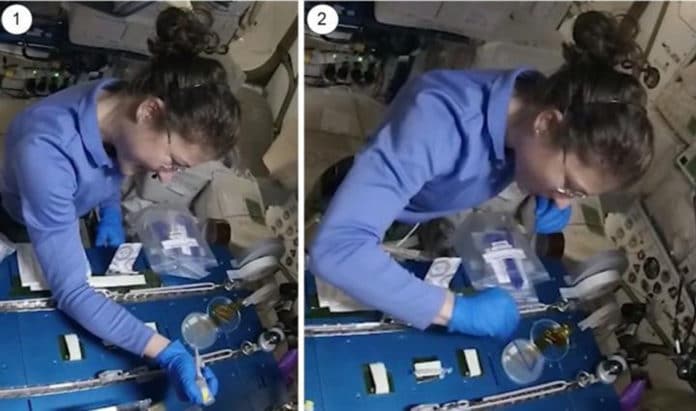Precise genome engineering in human cells has two general applications of importance and broad interest. The technology can repair damaged DNA and reduce the risk of cancer.
Astronauts traveling outside of Earth’s protective atmosphere face an increased risk of damage to DNA in space due to the ionizing radiation that permeates space. Hence it is essential to employ specific DNA-repair strategies in space.
Now, scientists have successfully performed gene editing for space travel. Sarah Stahl-Rommel of Genes in Space and colleagues present the new technique that allows DNA sequencing in space.
Scientists have developed a new method for studying DNA repair in yeast cells that can be conducted entirely in space. Their technique uses CRISPR/Cas9 genome editing technology to create precise damage to DNA strands. DNA repair mechanisms can then be observed in better detail than possible with non-specific damage via radiation or other causes.
This is the first demonstration of CRISPR/Cas9 genome editing in space: aboard the International Space Station. According to scientists, the technique will now enable extensive research into DNA repair in space.
The study also marks the first time in space that live cells have undergone successful transformation–incorporating genetic material from outside the organism.
Here, the team mainly focused on a double-strand break, a specific harmful type of DNA damage.
Senior author Sebastian Kraves said, “It’s not just that the team successfully deployed novel technologies like CRISPR genome editing, PCR, and nanopore sequencing in an extreme environment, but also that we were able to integrate them into a functionally complete biotechnology workflow applicable to the study of DNA repair and other fundamental cellular processes in microgravity. These developments fill this team with hope in humanity’s renewed quest to explore and inhabit the vast expanse of space.”
First author Sarah Stahl Rommel adds, “Being a part of Genes in Space-6 has been a highlight of my career. I saw firsthand just how much can be accomplished when the ideas of innovative students are supported by the best from academia, industry, and NASA. The team’s expertise resulted in the ability to perform high-quality, complex science beyond the bounds of Earth. I hope this impactful collaboration continues to show students and senior researchers alike what is possible onboard our laboratory in space.”
Co-author Sarah Castro-Wallace says, “It was an honor to support Genes in Space-6. I am still blown away by the incredible sophistication of the science that was realized when an organism was transformed, its genome-edited with CRISPR/Cas9 to cause breaks in the DNA, followed by its growth to allow for DNA repair, and, finally, its DNA sequenced, all in the spaceflight environment onboard the ISS. The ability to perform this all-encompassing, end-to-end investigation is a huge step forward for space biology. This caliber of work speaks to both the exceptional students and the Genes in Space Program.”
Journal Reference:
- Stahl-Rommel S, Li D, Sung M, Li R, Vijayakumar A, Atabay KD, et al. (2021) A CRISPR-based assay for the study of eukaryotic DNA repair onboard the International Space Station. PLoS ONE 16(6): e0253403. DOI: 10.1371/journal.pone.0253403
